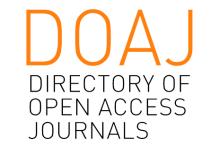Resource information
We propose a methodology for the evaluation of urban walkability, and the related software tool for decision and planning support. In the introduction, we discuss the relevance of the concept of walkability for urban quality of life, and attempt to place it within the framework of the capability approach. The central part of the article is dedicated to the presentation of the spatial multi-criteria evaluation model for walkability. Our construction of the walkability in the model proposes a certain change of perspective with regard to the methods suggested thus far: rather than evaluating how a place is walkable in itself, the walkability score we calculate reflects how and where to one can walk from that place, in other words, what is the walkability the place is endowed with. Therefore, the walkability score combines three components: (1) the number of available destinations (urban “opportunities”) reachable by foot; (2) their distances; and (3) the quality of pedestrian routes towards those destinations. The quality of pedestrian routes is evaluated on different attributes relevant for walkability, related to the characteristics of the streets and their surrounding environment which contribute to render the route pleasant, secure and attractive. By way of example, in the third part we present an example application on the city of Alghero (Italy).




